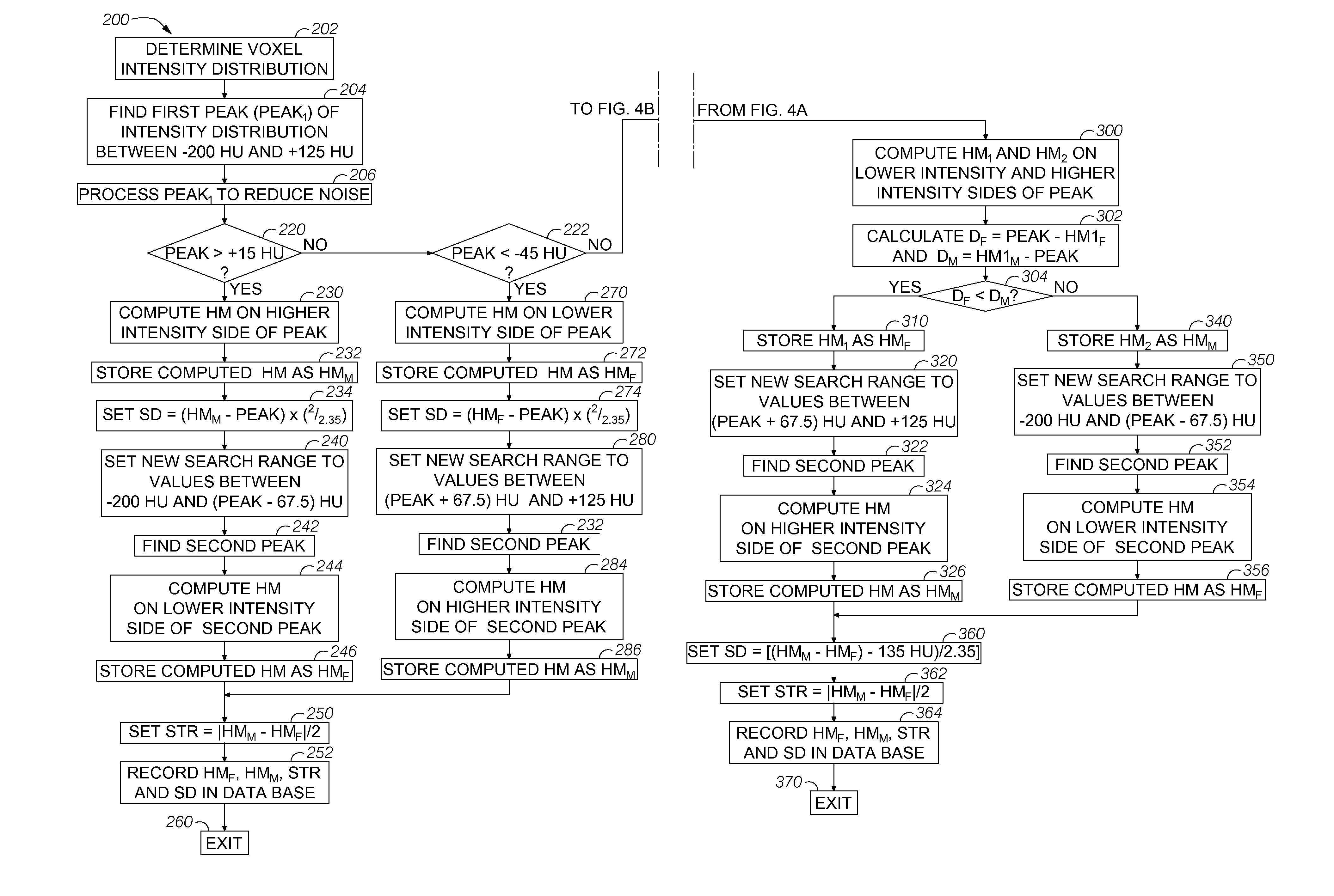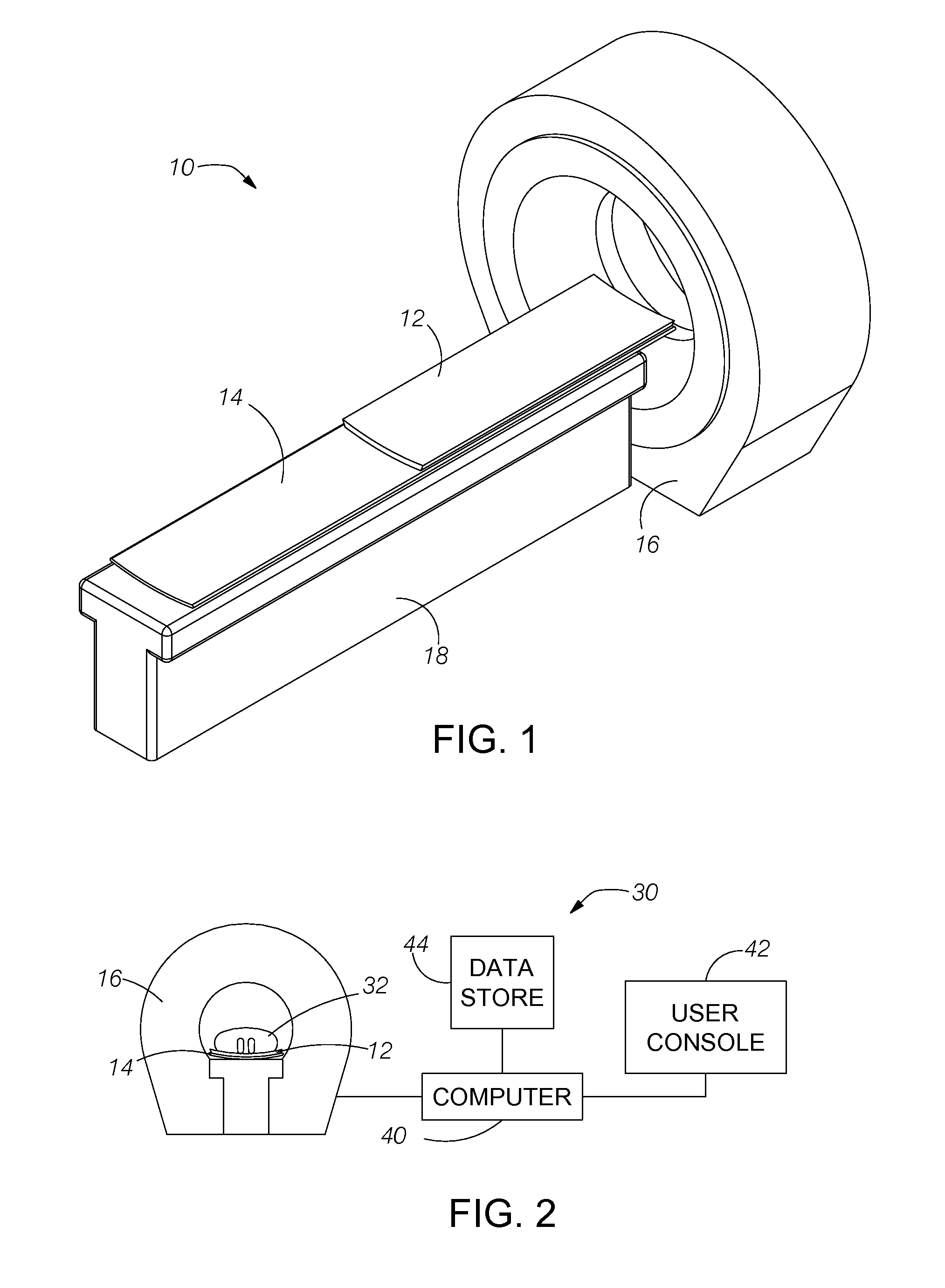System and method for calibration of CT scanners and display of images in density units without the use of water phantoms
a technology of density units and ct scanners, applied in tomography, instruments, applications, etc., can solve the problems of inaccurate representation of specific patient sizes, shapes or compositions by homogeneous water phantoms, and achieve the effect of avoiding time and cost of operator interaction
- Summary
- Abstract
- Description
- Claims
- Application Information
AI Technical Summary
Benefits of technology
Problems solved by technology
Method used
Image
Examples
Embodiment Construction
[0032]A system and method for calibration of CT scanners and display of images in density units without the use of water phantoms is disclosed herein with respect to exemplary embodiments. The embodiments are disclosed for illustration of the system and methods and are not intended to be limiting except as defined in the appended claims.
[0033]A representative embodiment of an exemplary CT scanning system 10 is shown in FIG. 1. The system includes a CT scanner 12, which is represented pictorially as a large toroidal chamber. The system includes a cushion or patient support pad 14 positioned on a CT scanner table 16 proximate to the scanning portal of the CT scanner. The scanner table rests on a support platform 18. One skilled in the art will appreciate that during an imaging procedure, a subject is placed on the scanner table. The scanner table moves longitudinally with respect to the top of the support platform to move the support pad and the subject into the portal of the CT scann...
PUM
 Login to View More
Login to View More Abstract
Description
Claims
Application Information
 Login to View More
Login to View More - R&D
- Intellectual Property
- Life Sciences
- Materials
- Tech Scout
- Unparalleled Data Quality
- Higher Quality Content
- 60% Fewer Hallucinations
Browse by: Latest US Patents, China's latest patents, Technical Efficacy Thesaurus, Application Domain, Technology Topic, Popular Technical Reports.
© 2025 PatSnap. All rights reserved.Legal|Privacy policy|Modern Slavery Act Transparency Statement|Sitemap|About US| Contact US: help@patsnap.com



